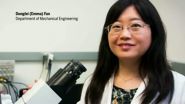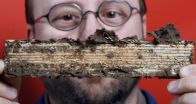(Press-News.org) New Rochelle, NY, May 20, 2014—Studies have identified mobile phones and related devices as sources of metal sensitization and potential causes of allergic contact dermatitis (ACD). Despite efforts to control allergen release in phones, many phones on the market release levels of metals, such as nickel and chromium, which are sufficient to induce ACD, according to an article in Pediatric Allergy, Immunology, and Pulmonology, a peer-reviewed journal published by Mary Ann Liebert, Inc., publishers. The article is available free on the Pediatric Allergy, Immunology, and Pulmonology website at http://online.liebertpub.com/doi/full/10.1089/ped.2013.0308.
In the article "Mobile Phone Dermatitis in Children and Adults: A Review of the Literature," a team of researchers led by Jacob Thyssen, MD, PhD, Copenhagen University Hospital Gentofte (Hellerup, Denmark), Loma Linda University School of Medicine (Loma Linda, CA), and University of Arizona College of Medicine (Phoenix, AZ), review the current literature on mobile phone dermatitis in both children and adults. Nickel sensitization is common in children, resulting in ACD prevalence levels of up to 33%. This information is important for practitioners, particularly when evaluating patients with dermatitis of the face, neck, hands, breast, or anterior thighs—common places exposed to cell phones. The authors provide important diagnostic tips for practitioners and strategies to raise awareness of nickel- or chromium-induced mobile phone ACD.
"With the rising use of cell phones and other mobile devices, pediatricians can expect to see additional cases of ACD," says Editor-in-Chief Mary Cataletto, MD, Professor of Clinical Pediatrics, State University of New York at Stony Brook (Stony Brook, NY) and practicing pediatric pulmonologist at Winthrop University Hospital. "Thyssen's paper discusses diagnostic patch testing for common metal allergens and the value of spot testing of the patient's phone in establishing a causal relationship."
INFORMATION:
About the Journal
Pediatric Allergy, Immunology, and Pulmonology is a quarterly peer-reviewed journal published in online with Open Access options and in print. The Journal synthesizes the pulmonary, allergy, and immunology communities in the advancement of the respiratory health of children. The Journal provides comprehensive coverage to further the understanding, and optimize the treatment, of some of the most common and costly chronic illnesses in children. It includes original translational, clinical, and epidemiologic research; public health, quality improvement, and case control studies; patient education research; and the latest research and standards of care for functional and genetic immune deficiencies and interstitial lung diseases. Tables of content and a sample issue may be viewed on the Pediatric Allergy, Immunology, and Pulmonology website at http://www.liebertpub.com/ped.
About the Publisher
Mary Ann Liebert, Inc., publishers is a privately held, fully integrated media company known for establishing authoritative peer-reviewed journals in many promising areas of science and biomedical research, including Journal of Aerosol Medicine and Pulmonary Drug Delivery, Population Health Management, and Breastfeeding Medicine. Its biotechnology trade magazine, Genetic Engineering & Biotechnology News (GEN), was the first in its field and is today the industry's most widely read publication worldwide. A complete list of the firm's 80 journals, books, and newsmagazines is available on the Mary Ann Liebert, Inc., publishers website at http://www.liebertpub.com.
Mary Ann Liebert, Inc.
140 Huguenot St., New Rochelle, NY 10801-5215
http://www.liebertpub.com
Phone: (914) 740-2100
(800) M-LIEBERT
Fax: (914) 740-2101
Can mobile phones cause allergic reactions?
2014-05-20
ELSE PRESS RELEASES FROM THIS DATE:
Climate change brings mostly bad news for Ohio
2014-05-20
COLUMBUS, Ohio— Scientists delivered a mostly negative forecast for how climate change will affect Ohioans during the next year or so, and well beyond.
Researchers report that the projected increase in precipitation and the associated runoff will likely lead to a larger-than-average bloom of harmful blue-green algae in Lake Erie this summer. In addition, the development of an El Niño over the Pacific later this year may result in a very dry 2015 in Ohio. But Ohio may fare better than its neighbors in one respect: While drought and high temperatures are expected to shrink ...
NIH researchers discover key factor in early auditory system development
2014-05-20
Researchers at the National Institutes of Health have uncovered a molecule in an animal model that acts as a key player in establishing the organization of the auditory system. The molecule, a protein known as Bmp7, is produced during embryonic development and acts to help sensory cells find their ultimate position on the tonotopic map, which is the fundamental principle of organization in the auditory system. The tonotopic map groups sensory cells by the sound frequencies that stimulate them. The study is the first to identify one of the molecular mechanisms that determines ...
Is there really cash in your company's trash?
2014-05-20
This news release is available in French. One company's trash can be another's treasure.
Take Marmite. Made from a by-product of commercial beer production, the yeast-based spread has topped toast throughout the Commonwealth for decades. By recuperating the waste product from one company, another was able to thrive.
Environmental concerns are at the forefront of government policy, so the time is right for companies worldwide to adopt this type of resource exchange, known as industrial symbiosis (IS).
A new study by Concordia University researcher Raymond Paquin ...
Engineers build world's smallest, fastest nanomotor
2014-05-20
VIDEO:
Cockrell School of Engineering assistant professor Donglei (Emma) Fan and her mechanical engineering team have built the fastest, smallest nanomotor to date. The team's nanomotor could enable controlled drug delivery...
Click here for more information.
Researchers at the Cockrell School of Engineering at The University of Texas at Austin have built the smallest, fastest and longest-running tiny synthetic motor to date. The team's nanomotor is an important step toward ...
Program to reduce behavior problems boosts math, reading, NYU Steinhardt study shows
2014-05-20
A program aimed at reducing behavior problems in order to boost academic achievement has improved performance in math and reading among low-income kindergartners and first graders, according to a study by researchers at New York University's Steinhardt School of Culture, Education, and Human Development.
Their findings, which appear in the Journal of Educational Psychology, point to the value of well-designed interventions to improve education, the study's authors say.
"Supporting young low-income children so they can reach their potential in the classroom and beyond ...
Professors' super waterproof surfaces cause water to bounce like a ball
2014-05-20
In a basement lab on BYU's campus, mechanical engineering professor Julie Crockett analyzes water as it bounces like a ball and rolls down a ramp.
This phenomenon occurs because Crockett and her colleague Dan Maynes have created a sloped channel that is super-hydrophobic, or a surface that is extremely difficult to wet. In layman's terms, it's the most extreme form of water proof.
Engineers like Crockett and Maynes have spent decades studying super-hydrophobic surfaces because of the plethora of real-life applications. And while some of this research has resulted in ...
Termite genome lays roadmap for 'greener' control measures
2014-05-20
WEST LAFAYETTE, Ind. - A team of international researchers has sequenced the genome of the Nevada dampwood termite, providing an inside look into the biology of the social insect and uncovering new genetic targets for pest control.
Michael Scharf, a Purdue University professor of entomology who participated in the collaborative study, said the genome could help researchers develop control strategies that are more specific than the broad-spectrum chemicals conventionally used to treat termite infestations.
"The termite genome reveals many unique genetic targets that can ...
Fairy circles apparently not created by termites after all
2014-05-20
This news release is available in German. Leipzig. For several decades scientists have been trying to come up with an explanation for the formation of the enigmatic, vegetation-free circles frequently found in certain African grassland regions. Now researchers have tested different prevailing hypotheses as to their respective plausibility. For the first time they have carried out a detailed analysis of the spatial distribution of these fairy circles – and discovered a remarkably regular and spatially comprehensive homogenous distribution pattern. This may best be explained ...
Fossils prove useful in analyzing million year old cyclical phenomena
2014-05-20
Research conducted at the University of Granada has shown that the cyclical phenomena that affect the environment, like climate change, in the atmosphere-ocean dynamic and, even, disturbances to planetary orbits, have existed since hundreds of millions of year ago and can be studied by analysing fossils.
This is borne out by the palaeontological data analysed, which have facilitated the characterization of irregular cyclical paleoenvironmental changes, lasting between less than 1 day and up to millions of years.
Francisco J. Rodríguez-Tovar, Professor de Stratigraphy ...
Improved computer simulations enable better calculation of interfacial tension
2014-05-20
Computer simulations play an increasingly important role in the description and development of new materials. Yet, despite major advances in computer technology, the simulations in statistical physics are typically restricted to systems of up to a few 100,000 particles, which is many times smaller than the actual material quantities used in typical experiments. Researchers therefore use so-called finite-size corrections in order to adjust the results obtained for comparatively small simulation systems to the macroscopic scale. A team of researchers from Johannes Gutenberg ...





